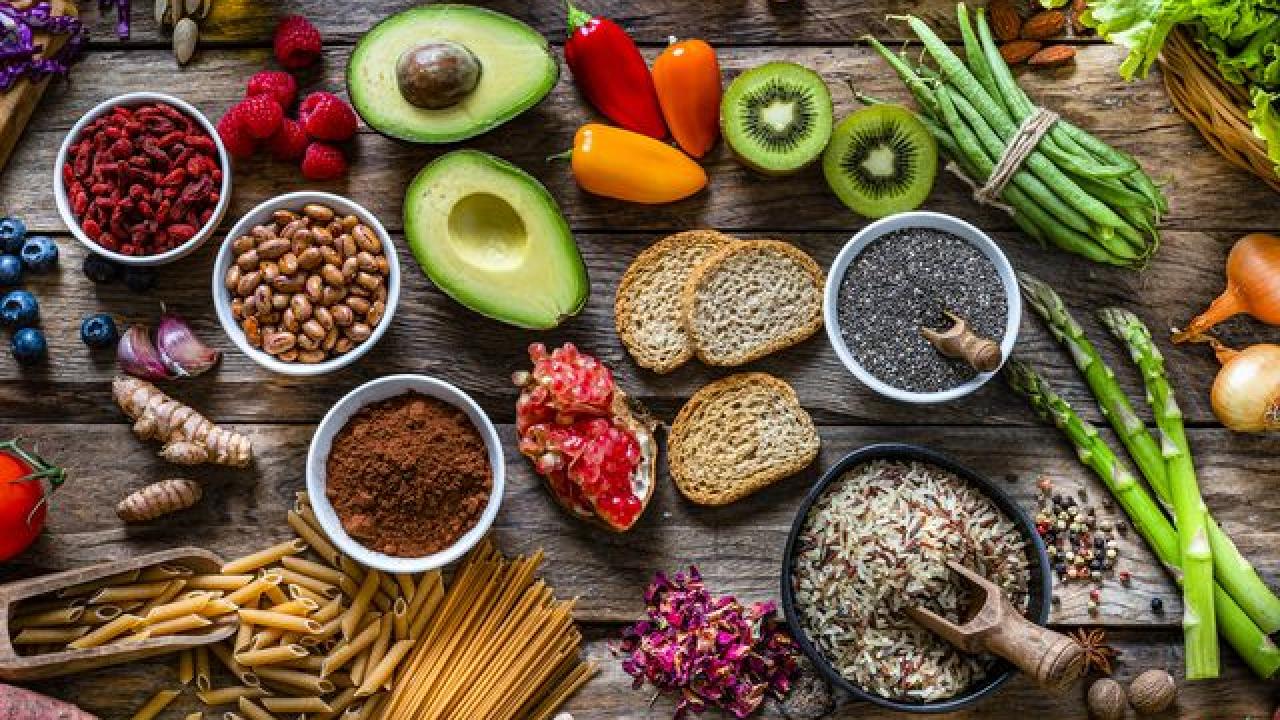
November - Fiber During the Holiday Season
Quick Summary
- Soluble fiber slows the absorption of carbohydrates by slowing the emptying of the stomach into the small intestine, reducing high blood sugar spikes. This may reduce the risk of developing Type 2 Diabetes!
The holiday season is approaching! This time of year is full of party invitations, family, friends, and of course, lots of delicious, extravagant food. Because of this, it is likely that our regular eating habits are the last thing we have in mind. This may leave us feeling a little extra full or in a food coma by the time we leave the party.
Recovering from these big meals in the following days may be tough on our digestive system if those meals had little fiber. Little fiber mixed with interruptions in regular bowel movement routines from traveling and social events can cause constipation. Consuming fiber-rich foods before and during holiday meals can help prevent constipation and provide us with other health benefits.
What is fiber?
Dietary fiber is found fruits, vegetables, whole grains, and legumes. It is a type of carbohydrate that is only found in plants and is not digested or absorbed by the body. It passes relatively intact through the stomach, small intestine, and colon. This makes it perfect in preventing and relieving constipation.
There are two types of fiber:
- Soluble fiber dissolves in water to form a gel-like substance that improves digestion. It may reduce blood sugar and cholesterol.
- Insoluble fiber attracts water to the stool, softening it and allowing it to pass through the digestive system and out of the body with reduced strain on the bowels. It also helps strengthen insulin sensitivity and may reduce risk of diabetes.
What are the health benefits or fiber?
- Normalizes bowel movements and promotes bowel health. Fiber softens and increases size and weight of stool, making it easier to pass and preventing constipation. Also, watery stool can be solidified by fiber because it absorbs water and adds bulk to the stool. Healthy, regular bowel movements lowers the risk of developing hemorrhoids in the colon and reduces the risk of colorectal cancer.
- Lowers cholesterol levels. Soluble fiber found in legumes and oats has been found to lower LDL cholesterol, considered the “bad” cholesterol. It binds to the cholesterol in the small intestine and prevents it from being absorbed into the bloodstream and into the body. It is, instead, excreted from the body through feces.
- Controls blood sugar levels. Soluble fiber slows the absorption of carbohydrates by slowing the emptying of the stomach into the small intestine, reducing high blood sugar spikes. This may reduce the risk of developing Type 2 Diabetes.
- Helps with weight loss and management. Soluble fiber increases the duration of the fullness sensation by slowing the emptying of the stomach. This keeps you satisfied for longer and delays the release of Ghrelin, the appetite stimulating hormone.
The daily recommendation of fiber for adults is 25 grams for women and 38 grams for men.
It is recommended to slowly incorporate fiber into the diet and to accompany it with good hydration.
Here is a list of some fiber-rich fruits and vegetables:
Fruits
Apples, avocado, berries, pears
Vegetables
Dark, leafy greens, carrots, beets, broccoli, artichokes
Legumes
Lentils, kidney beans, split peas, chickpeas
Whole grains
Oats, quinoa, popcorn, other sources of whole grains (whole grain pasta and bread)
Nuts and seeds
Chia seeds, almonds, pistachios, sunflower seeds
Ways to incorporate more fiber into your day:
- Incorporate at least one fresh fruit or vegetable into every meal. This adds volume to your meal and may keep you fuller for longer.
- Substitute your white bread and pasta with their whole grain alternatives. This will slow and the absorption of sugar into the bloodstream.
- Add beans or lentils into your soups and salads. These do not only absorb a lot of flavor, but also provide a great source of fiber.
- Make your snacks rich in fiber by including fresh or dried fruits and vegetables. This will keep you satisfied between meals.
- Eat a fiber rich fruit before you head over to the party.
Seasonal Foods and Recipes
Pumpkin Oat Pancakes
These gluten free, pumpkin pancakes are perfect to jump-start the day with fall flavors.
Garlic Parmesan Roasted Brussel Sprouts
These flavorful, roasted brussels sprouts are the perfect addition to your holiday meal.
Easy Kale Soup
This Mediterranean-inspired warm kale soup is the perfect for a cozy dinner during the fall season.
Curtido (Salvadoran Cabbage Relish)
This tangy Salvadorean cabbage relish is traditionally served with pupusas and salsa roja, but can also be served with grilled meats.
Honey Garlic Cauliflower
This crunchy, sweet, and spicy is the perfect snack to keep you running between meals.